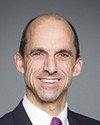I'd like to answer your question about location.
The Université du Québec en Abitibi-Témiscamingue serves the entire vast area of Abitibi-Témiscamingue, as well as Northern Quebec -- in other words, about two thirds of the province. We have developed strategies to make a university education accessible to as many people as possible. For more than 25 years now, we have been working with First Nations communities. When communities ask us to provide part-time training -- for instance, a certificate in administration or management sciences -- we go right into the community. We have provided and continue to provide training in a great many communities, including Waswanipi, Oujé-Bougoumou, Chisasibi and Mistassini.
In the last few years, for example, we have been offering a Bachelor of Social Work program. We began with a cohort of 50 Cree students, 45 of whom received their diploma. A Bachelor-level program normally lasts three years, but it took us seven years to teach the program in nine Cree communities. We would set aside a certain number of days in a month to teach the students. The teachers, teaching assistants and support staff would go into a specific community, and then move on to another one the following month. The program was offered in nine communities over a seven-year period. We also provided training in Val d'Or and Rouyn-Noranda.
As Mr. Bagnell was saying, there are other strategies as well, such as distance learning and videoconferencing.
The UQAT has chosen to provide full-time training in Val d'Or, because it is located in the Abitibi-Témiscamingue—Northern Quebec region. It is a normal channel. First Nations communities have access to a range of services in Val d'Or. Edith could probably provide additional information in that regard.
We are not claiming to offer a solution for the province as a whole. I'm simply talking about what we are doing in our area of Abitibi-Témiscamingue and Northern Quebec.




